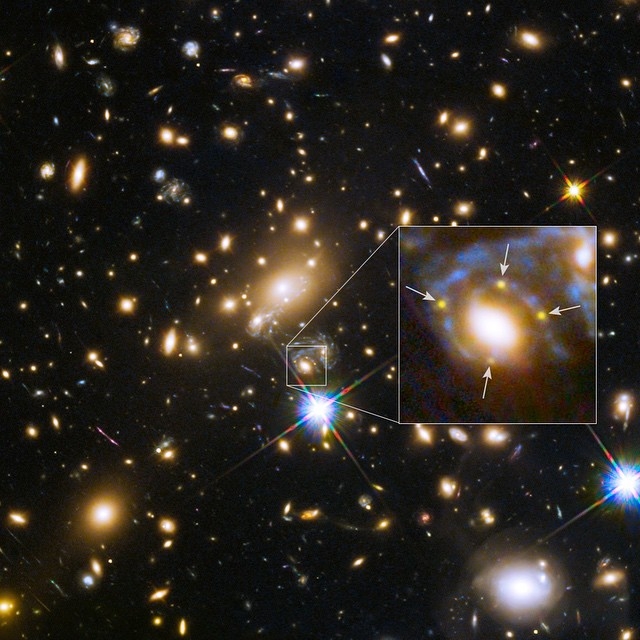Due to a human’s relatively shorter lifespan, stars might appear eternally hanging in the night sky. But scientists are now finding out that isn’t actually the case as stars have been inexplicably vanishing from the sky in just a matter of decades.
The discovery was first made by a team of researchers in Sweden back in 2016, according to CNET. One of the stars found in the US Naval Observatory Catalogue (USNO) made in the 1950s can no longer be seen in the skies today even with the most sophisticated detection equipment available.
Intrigued, lead researcher Beatriz Villarroel and her team started a search for these missing stars. They compared around 10 million heavenly objects recorded in the USNO to the more recent recordings of the Sloan Digital Sky Survey (SDSS), which started collecting data in 2000.
The team uncovered 290,000 objects found in the older USNO records but are missing in the SDSS catalog, Science Alert reported. However, most of these missing objects were eventually accounted for. After the elimination, they were left with 100 stars that seemed to have genuinely disappeared.
Researchers from the Vanishing & Appearing Sources during a Century of Observations (Vasco) project do not claim that they’ve already found signs of aliens during their studies. What they propose, however, is that the best places to look for extraterrestrial intelligence are those areas near the stars that have vanished.
“Unless a star directly collapses into a black hole, there is no known physical process by which it could physically vanish,” the study, led by Stockholm University’s Beatriz Villarroel, explained. “The implications of finding such objects extend from traditional astrophysics fields to the more exotic searches for evidence of technologically advanced civilizations.”
In 1964, Russian astrophysicist Nikolai Kardashev divided civilization into different types based on the amount of energy at their disposal, according to Futurism. A Type I civilization in the Kardashev scale, also called planetary civilization, can use all energy sources available in its home planet, a Type II, also known as a stellar civilization, can utilized all energy in its stellar system with a Type III can utilize the energy of its home galaxy, which is why it’s also called a galactic civilization.
One proposed explanation is that a Type II civilization might be near these missing stars. Theoretically, a civilization technologically advanced enough can build what is known as the Dyson Sphere, an enormous structure that totally encloses a star so that it can capture all of its energy output like a giant solar panel. If such a structure encloses a star, no light would leak out and the star would "disappear" from the sky.
Understandably, not everyone believes in the possibility of aliens having a hand at these stellar disappearances. “We believe that they are natural, if somewhat extreme, astrophysical sources,” Martin López Corredoira from the Instituto de Astrofísica de Canarias said. “But we are clear that none of these events have shown any direct signs of being ETI [extra terrestrial intelligence].”



 Our survey of the sky is uncovering the secrets of how planets are born
Our survey of the sky is uncovering the secrets of how planets are born  Spacesuits need a major upgrade for the next phase of exploration
Spacesuits need a major upgrade for the next phase of exploration  Why is the universe ripping itself apart? A new study of exploding stars shows dark energy may be more complicated than we thought
Why is the universe ripping itself apart? A new study of exploding stars shows dark energy may be more complicated than we thought  Genetic diseases: How scientists are working to make DNA repair (almost) a piece of cake
Genetic diseases: How scientists are working to make DNA repair (almost) a piece of cake  Customizing mRNA is easy, and that's what makes it the next frontier for personalized medicine − a molecular biologist explains
Customizing mRNA is easy, and that's what makes it the next frontier for personalized medicine − a molecular biologist explains  Synthetic human embryos let researchers study early development while sidestepping ethical and logistical hurdles
Synthetic human embryos let researchers study early development while sidestepping ethical and logistical hurdles  What is minoxidil, the anti-balding hair growth treatment? Here’s what the science says
What is minoxidil, the anti-balding hair growth treatment? Here’s what the science says  Why now is the time to address humanity’s impact on the moon
Why now is the time to address humanity’s impact on the moon  Dark energy is one of the biggest puzzles in science and we're now a step closer to understanding it
Dark energy is one of the biggest puzzles in science and we're now a step closer to understanding it  Black hole, neutron star or something new? We discovered an object that defies explanation
Black hole, neutron star or something new? We discovered an object that defies explanation  Could a telescope ever see the beginning of time? An astronomer explains
Could a telescope ever see the beginning of time? An astronomer explains  Alpha, beta, theta: what are brain states and brain waves? And can we control them?
Alpha, beta, theta: what are brain states and brain waves? And can we control them?  Six space missions to look forward to in 2024
Six space missions to look forward to in 2024  Why some people don't trust science – and how to change their minds
Why some people don't trust science – and how to change their minds 






























